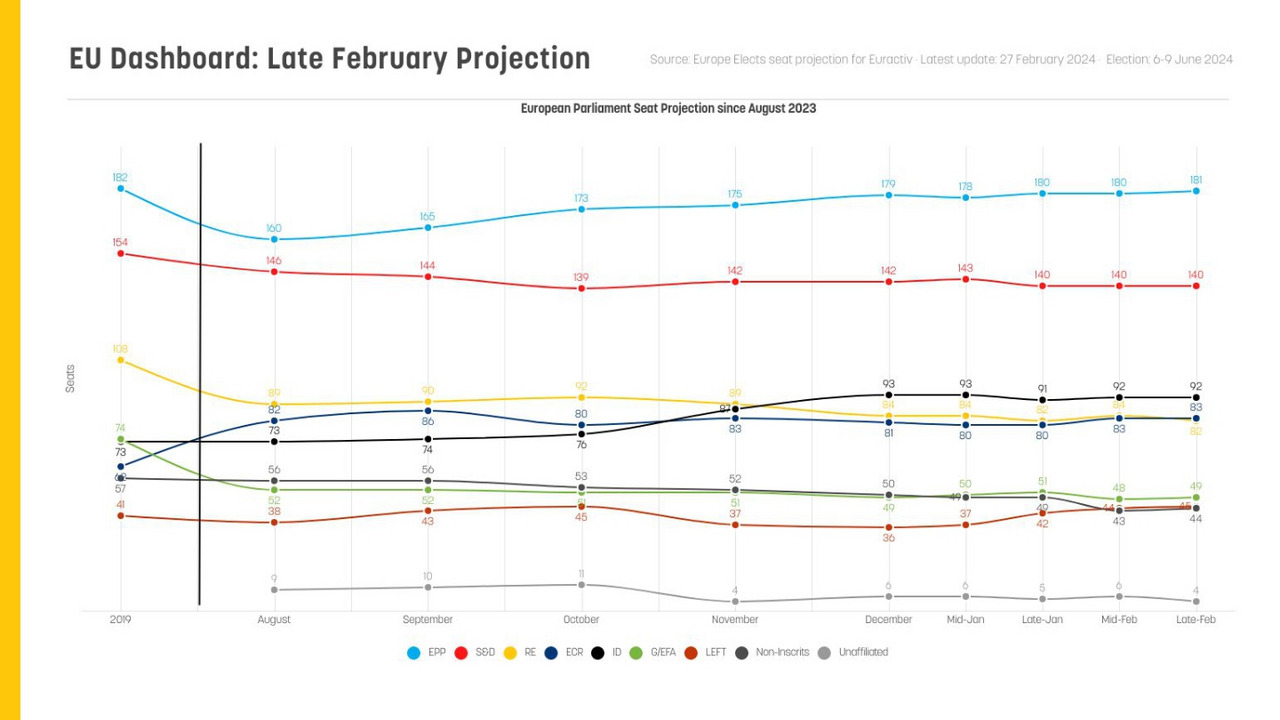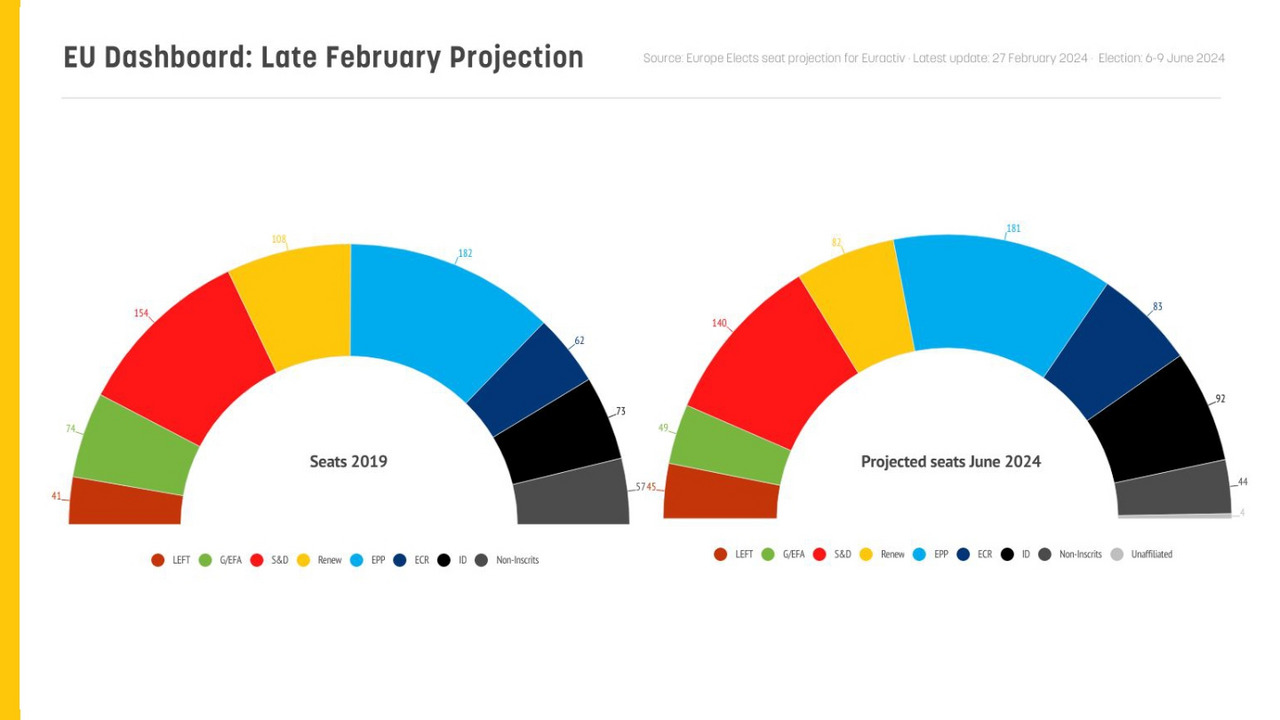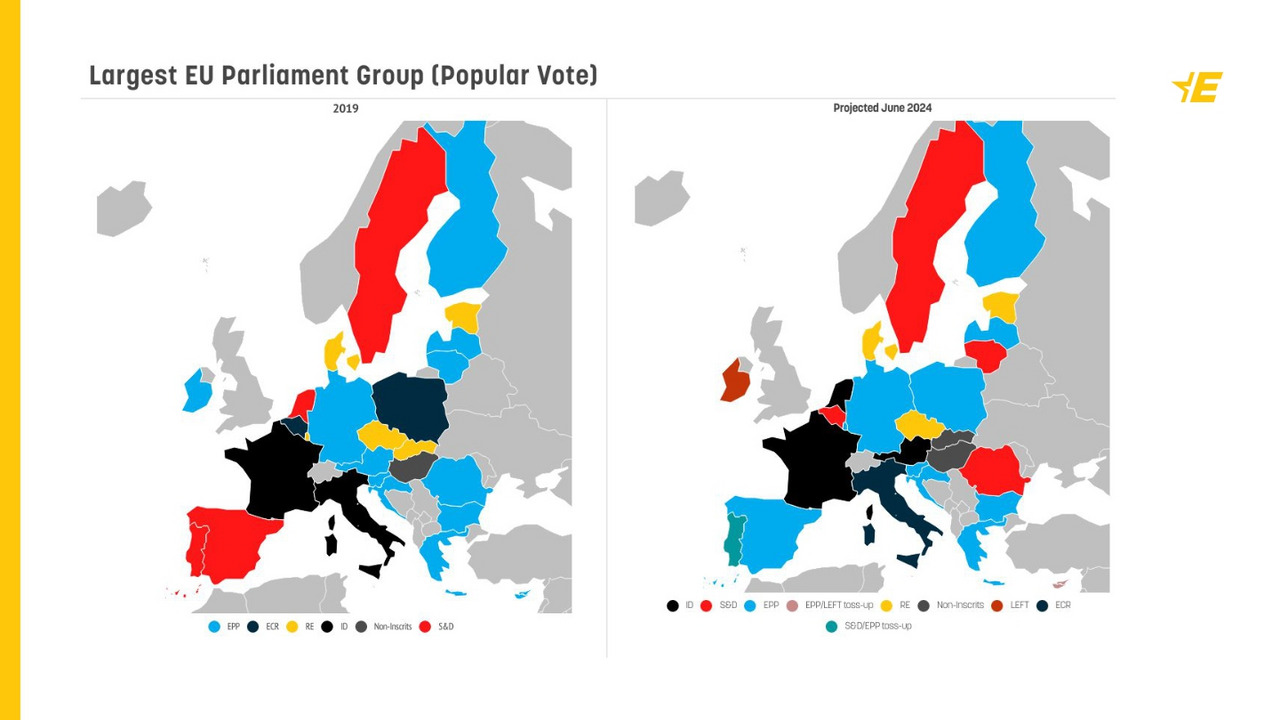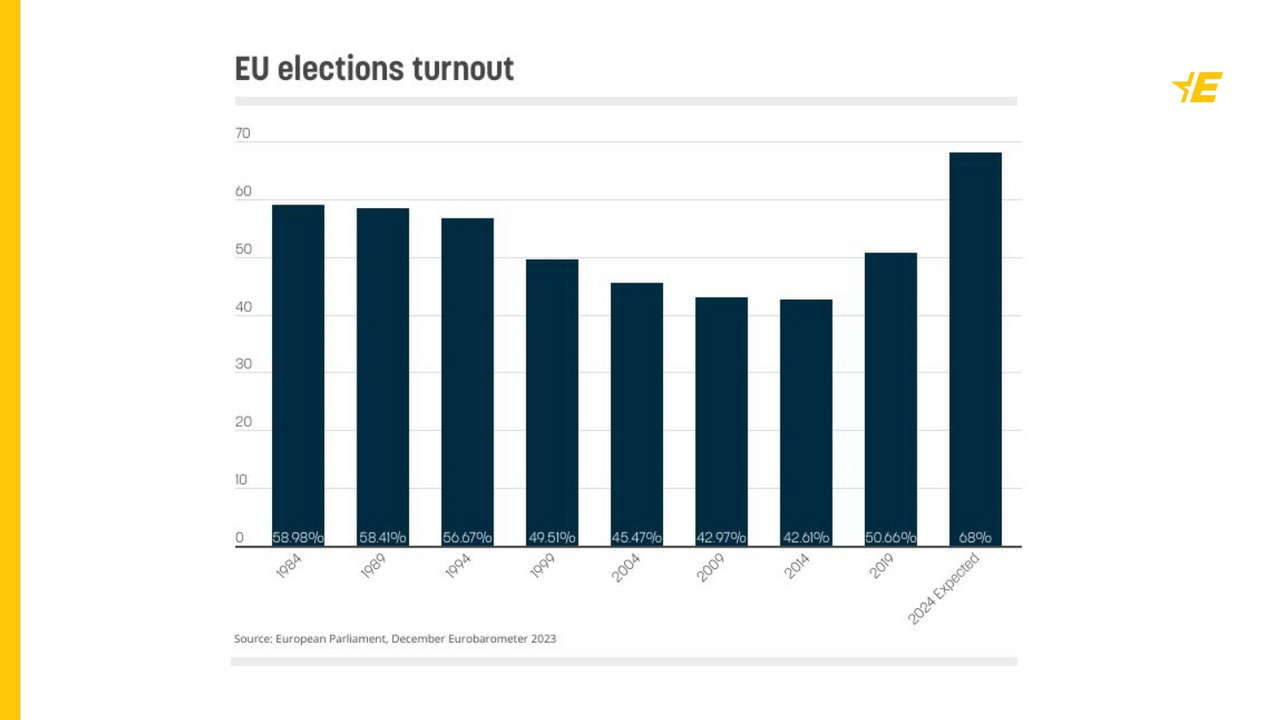Introduction
In the midst of a tumultuous geopolitical climate, underscored by the ongoing war in Ukraine, the upcoming European Parliament elections in June will be a critical juncture for the EU. However, if experience serves well, we are approaching another high-stakes-low-turnout election – despite the fact that the EU will have to confront many challenges, both internal and external, over the next few years.
This session delves into the dramatic shifts within the EU’s political landscape, where an increasing tilt towards right-wing governance is evident. Concurrently, we are observing a significant shift as traditional liberal parties, once dominant in the centrist sphere, are being increasingly challenged, even relegated to the peripheries of power. This political dynamic, both within and outside the EU, raises crucial questions about the future of leadership in the Union, which we will dive into in much more detail during this warm-up session.
Part I: Support for Ukraine and EU defence policy
Our recent report “The War and the Vote” delves into the correlation of political orientation and support for Ukraine policies in the EU as well as seven member states. It was published in February 2024 and refers to survey data collected in December 2023.
1. Does the European Union need a common defence policy?
eupinions, December 2023: General distribution across the EU and seven member states, then by political orientation
2. Should the EU support Ukraine by delivering weapons?
eupinions, December 2023: General distribution across the EU and seven member states, then by political orientation
Part II: EP seat projections and right-wing surge
1. European Parliament Seat Projection since August 2023
EU Dashboard – Late February Projection
2. Europe Elects seat projection for Euractiv
EU Dashboard – Late February Projection
3. Latest EU Parliament Group (Popular Vote)
Part III: The voters’ perspective – turnout, motivation and pressing issues to be addressed
The following questions deal with EU elections turnout, EU citizens’ attitudes towards the upcoming elections, their willingness to participate and their motivation to do so:
1. Are you planning to vote in the European Parliamentary elections?
eupinions, December 2023: General distribution across the EU and seven member states
2. Imagine you could choose the three tasks the EU should focus on in the coming years.
eupinions, December 2023: General distribution across the EU and seven member states
3. What are the main reasons why you plan to vote in the European Parliamentary elections?
eupinions, December 2023: General distribution across the EU and seven member states
4. The European Parliament takes the concerns of European citizens into account.
eupinions, December 2023: General distribution across the EU and seven member states
5. EU elections turnout
European Parliament, December Eurobarometer 2023
About eupinions
eupinions is an independent platform for European public opinion. We collect and analyse data on European public opinion and comment on what Europeans think about current political issues and megatrends.
Every quarter, we collect samples from each EU member state in 22 languages. Our data is representative with regard to age, gender, education and country/region.
eupinions is a Bertelsmann Stiftung project. The data is collected by Latana.
Visit www.eupinions.eu for further information!
eupinions is cooperating with a wide range of Europeans partners. This data has been presented in collaboration with CEPS Ideas Lab (2024).
Methodology note
The samples analysed in this report were drawn by Latana in December 2023 (n=13,299) across all 27 EU member states. Our samples take into account current population distributions with regard to age (16-70 years), gender and region/country. In order to obtain census representative results, the data were weighted using the most recent Eurostat statistics.
Any references to differences between countries in the report pertain only to the seven countries with sufficiently large sample sizes: Belgium, France, Germany, Italy, the Netherlands, Poland and Spain.
Given the sample size and design-effect considerations, the margin of error is 0.9% at a confidence level of 95%.







